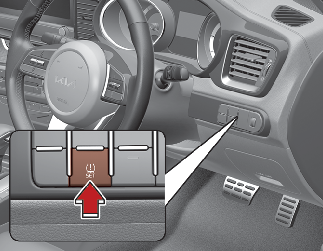TPMS reset procedure
You should reset TPMS in below situations.
-
After repairing or replacing tyres (or wheels)
-
After rotating tyres
-
After adjusting tyre pressure
-
When the low tyre pressure indicator illuminates
-
After replacing suspension or ABS system

* If the low tyre pressure indicator turns on repeat step More Details.
When resetting TPMS, the current tyre pressure is stored as a standard tyre pressure.

-
Without inflating the tyres, if you reset TPMS, the system may not inform you properly even though the tyres are significantly under-inflated. You must check the proper tyre pressure before resetting TPMS.
-
The TPMS may not function properly if you do not reset TPMS although the TPMS needs to be reset.
-
If you push the TPMS reset button whilst driving, the TPMS reset process is not activated. You must push the TPMS reset button whilst the vehicle is at a complete stop.
-
Tyre pressure should be checked and inflated whilst the tyres are cold.
A cold tyre means the vehicle has been sitting for 3 hours and driven for less than 1.6 km (1 mile) in that 3 hour period.